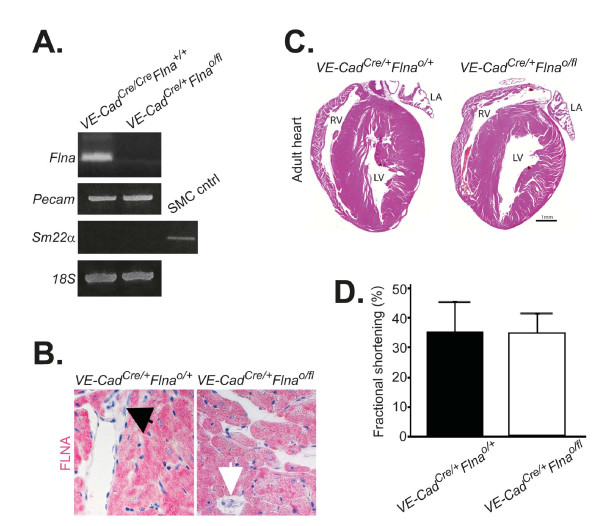Figure 4.
Normal cardiac morphology and function in mice deficient for FLNA in vascular endothelium. (A) RT-PCR analysis of Flna and Pecam transcripts in cardiac endothelial cells extracted from a female mouse encoding Cre under the VE-Cadherin promoter and expressing wild-type Flna (VE-CadCre/CreFlna+/+) and from a male mouse that expresses no FLNA (VE-CadCre/+Flnao/fl). Sm22α served as a negative control to demonstrate the purity of endothelial cell extraction from vascular smooth muscle cells and 18 S served as internal loading control. (B) Immunohistochemical detection of FLNA in hearts. Red color represents immunohistochemical positivity and blue color indicates nuclear counterstaining. The black arrow points to a FLNA-positive endothelial cell in VE-CadCre/CreFlnao/+ heart, whereas the white arrow indicates a FLNA-negative endothelial cell in VE-CadCre/+Flnao/fl heart. Original magnifications × 20. (C) No histomorphological differences in adult cardiac sections between VE-CadCre/+Flnao/+ and VE-CadCre/+Flnao/fl male mice. Hematoxylin & Eosin stain. LA; left atrium, RV; right ventricle, LV; left ventricle. (D) No differences in percentage of cardiac fractional shortening between VE-CadCre/+Flnao/+ and VE-CadCre/+Flnao/fl male mice as measured by cardiac ultrasound.

